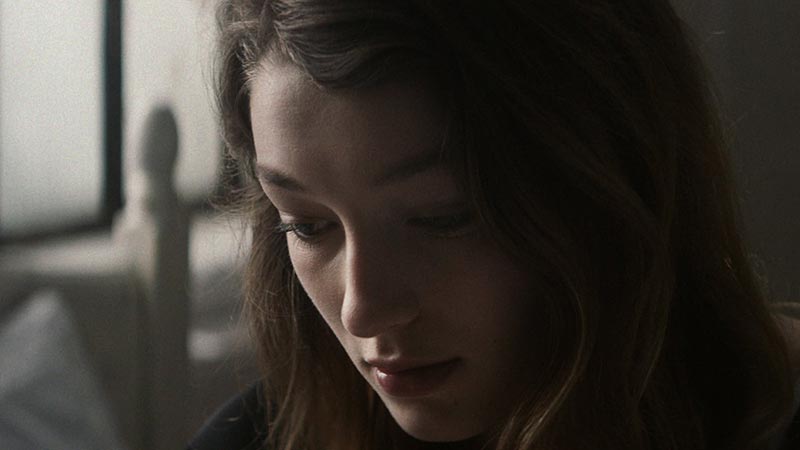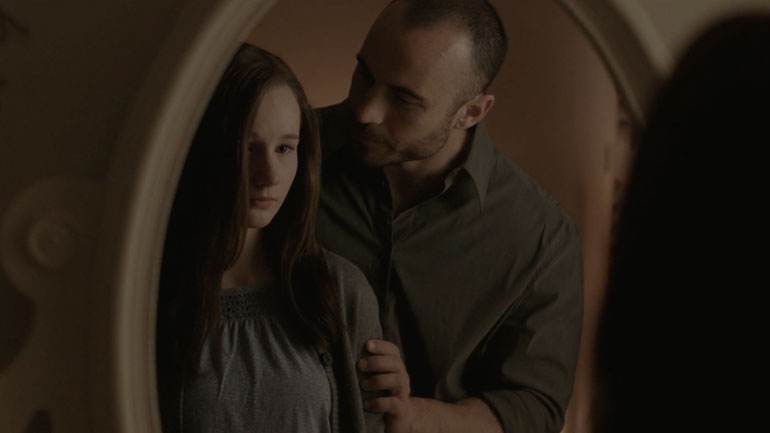Seven stages of love as experienced by a woman eager to find her own definition of it.
What was the inspiration behind the concept of the “Seven stages of love” as depicted in the film?
This concept derives from the Urdu culture. It says that love is a cycle that consists of seven stages, starting with attraction and ending with death, a metaphorical death. It feels to me that this concept covers all major definitions of love you’ve ever heard and unites them, stating that love is all of it.
The film’s pace and flow explored an unusual path. Could you elaborate on how you wanted to challenge traditional storytelling techniques to convey the protagonist’s journey effectively?
I think I was challenging myself rather than traditional storytelling. It just so happened that at the same time as I learned about that Urdu concept, I watched “Les Solitudes” by Frédéric Guelaff. It’s a short visual artwork featuring Adele Haenel, who responds to several prompts, basically words, while facing a camera, each word – one continuous zooming-in shot. I immediately thought it could be interesting to explore those “seven stages of love” using the same artistic approach, each stage – one shot.
Can you tell us about the creative process behind creating the distinct look and feel of the movie?
It started with deciding on camera movements. When you are limited by one continuous shot per scene, it is always tempting to make your camera float around to bring as much information to the screen as possible. But our goal with Eric Alt (cinematographer) was to use it as a vessel for the protagonist’s (Aishwarya Sonar) emotions – make it float when she is “flying,” make it static when she is “paralyzed,” make it “leave” when her emotions are gone. Then colors came into play – from a calm but warm palette at the beginning, it peaks in its vividness together with the protagonist’s love but then finishes with almost washed-out and cold colors at the end of her journey. Same with patterns – I wanted to include elements of nature in the film’s production design (Inkar Maxutova) and wardrobe (Leslie Tu) that would evolve together with the protagonist’s love story – from leaves, buds it progresses to flowers, fruits, but then completely disappears in the final scene.
Were there any particular films, directors, or artists that influenced your style and choices while making this short film?
I’ve already mentioned Guelaff as an inspiration for the film’s visual structure. But every scene has its own inspiration or subtle reference in its composition to some artworks. Just to name a few – “Attraction” repeats the composition of Boticelli’s “Birth of Venus,” “Attachment” references Velazquez’s “Venus at her Mirror,” “Love” – Boty’s “Colour her Gone.” I would leave the rest for the viewers to decide or guess.
The theme of self-discovery and finding one’s own definition of love resonated strongly with the audience. What message or takeaway did you intend to convey through the film?
First of all, I wanted to keep the story as universal as possible. That’s why you won’t hear characters’ names, details on their background, or even SEE the object of her love. This short film holds a special place in my heart – I went through all these stages myself, and some of the lines or images come from my own experience that I keep as love notes or memories. But I don’t want to impose any “truth” on my audience. I wish them to decide for themselves at which stage they are, whether they consider it good or bad, and whether the resolution of “Dictionary” is an end or a beginning.
Can you share any challenges you faced while making the film and how you overcame them to bring your creative vision to life?
“Dictionary” was filmed in one location in one day – to create a sense of visual variety working within the resource- and time-constraints of a single location is already a challenge. But on top of that, the film was shot during the pandemic, so we had to follow a very strict health safety protocol. One of the most challenging parts of it was to keep the number of cast&crew present on set at the same time below 10. Sofia Terpou and Alex Casanova (producers) did an excellent job planning, scheduling, and rotating people.
What short films have you seen lately, and which are your favorite all-time?
I’ve seen many shorts lately, because I am on the festival run with my latest short “Intern.” One of many films that I really enjoyed was “Retrograde” by Ali Roumell Rosenthal. But my all-time favorite is “The Cub” by Riley Stearns.



